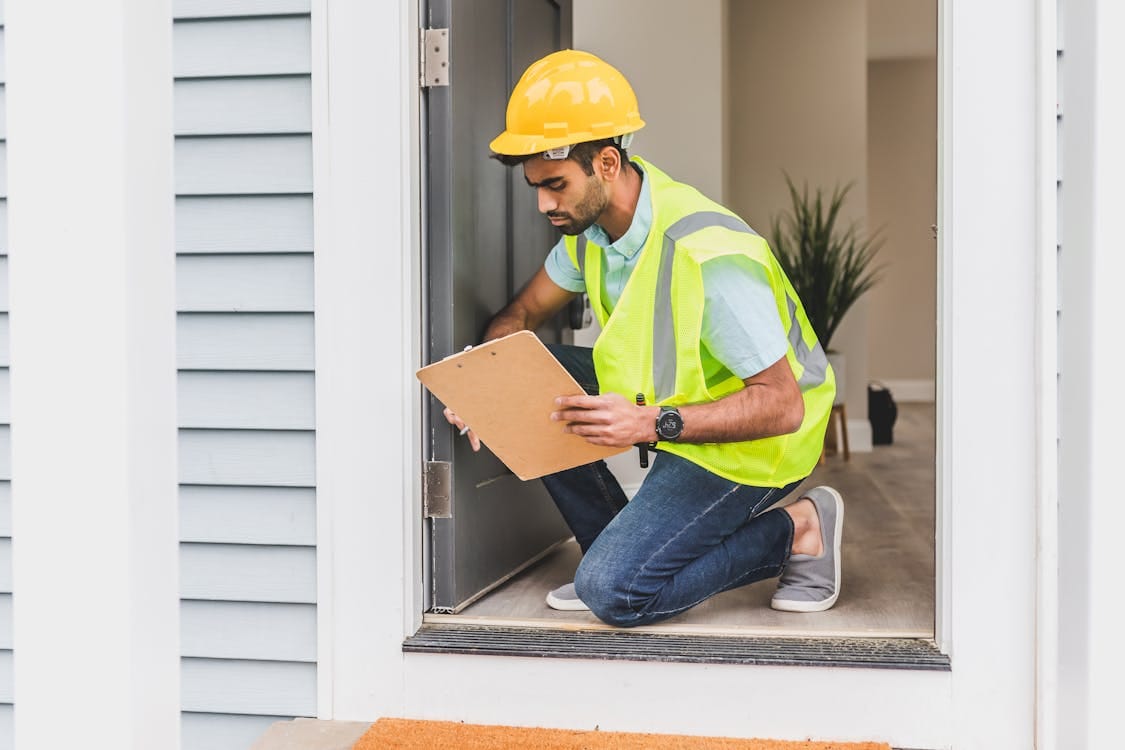Table of Contents
- What Exactly *Is* a Newborn Umbilical Hernia?
- Spotting the Signs: Symptoms of an Umbilical Hernia
- When Should I Be Concerned? Red Flags to Watch For
- Diagnosis: How Will My Doctor Know?
- Treatment and Management: What are the Options?
- Debunking Myths and Answering Common Questions
- Practical Tips for Parents: Navigating Your Baby’s Umbilical Hernia
- Conclusion: Reassurance and Key Takeaways
Newborn Umbilical Hernia: Understanding and Care – A Parent’s Guide
Bringing a newborn home is a whirlwind of joy, exhaustion, and constant learning. You scrutinize every coo, every cry, and every tiny physical detail. So, it’s completely understandable if you notice a little bulge around your baby’s belly button and feel a flicker of concern. Is that ‘outie’ belly button normal? Could it be something called an umbilical hernia? Deep breaths, new parent! While the term ‘hernia’ might sound alarming, a newborn umbilical hernia is actually quite common and usually harmless. Most resolve on their own without any intervention.
However, knowing what it is, what to look for, and how to care for your little one provides invaluable peace of mind. This comprehensive guide will walk you through everything you need to know about infant umbilical hernias – from the causes and symptoms to home care tips and understanding when (and if) medical treatment is needed. Let’s unravel the mystery behind that little belly button bulge together.

What Exactly *Is* a Newborn Umbilical Hernia?
First things first, let’s define what we’re talking about. An umbilical hernia in a newborn occurs when a small part of the intestine or fatty tissue pushes through a weak spot in the abdominal muscles near the navel (umbilicus). This creates a soft swelling or bulge.
The Basics: How It Forms
During pregnancy, the umbilical cord passes through a small opening in the baby’s abdominal muscles, connecting the baby to the placenta. After birth, this opening, called the umbilical ring, normally closes tightly shortly after the umbilical cord stump falls off. However, sometimes this ring doesn’t seal completely shut right away. This lingering gap provides an opportunity for abdominal contents (like a loop of intestine or some abdominal lining fat) to poke through, especially when there’s increased pressure inside the abdomen.
Why Does It Happen? The Anatomy Explained
Think of the abdominal wall as a strong container holding everything inside. The umbilical ring is a temporary, natural opening in that container. If the muscles around this opening are slightly delayed in closing and strengthening after birth, the pressure from inside the abdomen (which naturally increases when a baby cries, coughs, or strains during a bowel movement) can push tissue outward through the weak spot. It’s simply a matter of developmental timing – the muscles haven’t quite finished their closing-up job yet.
Is It Common? Understanding Prevalence
Yes, umbilical hernias in babies are surprisingly common! Estimates suggest they occur in about 10% to 20% of all full-term infants. The prevalence is even higher in certain groups:
- Premature babies: Their abdominal muscles may be less developed at birth.
- Low birth weight infants: Similar reasons related to muscle development.
- Infants of African descent: Studies show a higher incidence in these populations, though the exact reasons aren’t fully understood.
So, if your baby has one, know that you are far from alone. It’s a frequent occurrence seen by pediatricians.
Spotting the Signs: Symptoms of an Umbilical Hernia
Identifying an umbilical hernia is usually straightforward. The signs are primarily visual and tactile.
The Telltale Bulge
The most obvious sign is a soft swelling or bulge right at or very near the belly button. This bulge can vary significantly in size, from smaller than a grape to larger than a plum. It typically feels soft and squishy to the touch. You might even be able to gently push the bulge back into the abdomen (this is called ‘reducing’ the hernia), though you should never force it.

When Does It Appear Most Noticeable?
The hernia bulge often becomes more prominent when there’s increased pressure within the baby’s abdomen. You might notice it looks bigger or pops out more when your baby is:
- Crying intensely
- Coughing
- Straining to have a bowel movement
- Sitting up (in older infants)
When your baby is calm and relaxed, perhaps sleeping, the bulge might shrink or even seem to disappear completely as the pressure decreases and the tissue slips back through the opening.
Is It Painful for My Baby?
This is a crucial point for parental peace of mind: A typical, uncomplicated umbilical hernia is usually not painful for the baby. While the bulge might look concerning, your little one likely doesn’t feel any discomfort from it. They’ll feed normally, sleep normally (aside from typical newborn sleep patterns!), and generally be their happy selves. Pain is actually a red flag, which we’ll discuss next.
When Should I Be Concerned? Red Flags to Watch For
While most umbilical hernias are harmless and resolve on their own, there’s a very small risk of a complication called incarceration or, even more rarely, strangulation. This is why it’s important to know the warning signs, even though these complications are uncommon.
Understanding Incarceration
Incarceration occurs when a loop of intestine or abdominal tissue becomes trapped in the hernia opening and cannot be easily pushed back in. It’s like getting stuck in a doorway. This is a serious situation because it can cut off the blood supply to the trapped tissue.
Signs of an Incarcerated Hernia
These are the symptoms that warrant an immediate call to your pediatrician or a visit to the emergency room. Don’t wait and see if you notice:
- Sudden, significant pain or tenderness: Your baby may cry inconsolably and seem to be in distress, especially when the hernia area is touched.
- Firmness or hardness of the bulge: An incarcerated hernia often feels much firmer than the usual soft bulge and cannot be reduced (pushed back in).
- Swelling and discoloration: The bulge might look larger, swollen, and potentially red, purplish, or bluish.
- Vomiting: This can be a sign that the trapped bowel is obstructed.
- Constipation or inability to pass gas: Also indicates a potential bowel obstruction.
- Fever: May develop if infection sets in.
What is Strangulation?
Strangulation is the most severe complication and is a surgical emergency. It happens when an incarcerated hernia completely loses its blood supply due to the constriction at the hernia opening. The trapped tissue begins to die, which can lead to severe infection and life-threatening problems. The signs are similar to incarceration but often more intense and rapid in onset.
When to Call the Doctor Immediately
Do not hesitate. Contact your doctor or seek emergency medical care right away if your baby exhibits any signs of a possible incarcerated or strangulated hernia. Prompt medical attention is crucial in these rare instances.
Diagnosis: How Will My Doctor Know?
Diagnosing a newborn umbilical hernia is typically a straightforward process based on a physical examination.
The Physical Examination
Your pediatrician will examine your baby’s belly button area during a routine check-up. They will:
- Look at the bulge when the baby is calm and potentially when crying (to see if it changes size).
- Feel the bulge to assess its size, consistency (softness), and whether it can be gently pushed back (reduced).
- Estimate the size of the opening (the fascial defect) in the abdominal muscle.
The doctor will also ask you about any symptoms you may have noticed, particularly concerning signs like pain or vomiting.

Are Tests Usually Needed?
In most cases, no special tests like ultrasounds or X-rays are needed to diagnose a simple umbilical hernia. The diagnosis is primarily clinical, based on the physical exam findings. Tests might only be considered if the diagnosis is uncertain or if there’s suspicion of a complication.
Treatment and Management: What are the Options?
The good news is that the vast majority of infant umbilical hernias don’t require active treatment and will close on their own as the baby grows and their abdominal muscles strengthen.
Watchful Waiting: The Most Common Approach
For most babies, the recommended course of action is simply watchful waiting. This means your pediatrician will monitor the hernia during regular check-ups, but no specific intervention is needed unless complications arise or the hernia persists beyond a certain age.
- Why Patience is Key: The natural tendency is for the umbilical ring to close spontaneously. Interfering unnecessarily isn’t helpful and might even cause problems (like skin irritation from taping).
- Typical Timeline for Closure: Many umbilical hernias close by the time a child is 1 or 2 years old. A significant number close even later, sometimes up to age 4 or 5. Your doctor will track its progress.
Home Care Tips: Supporting Natural Healing
While you wait for nature to take its course, focus on gentle, routine care:
- Keep the Area Clean and Dry: Basic hygiene is important, just like for the rest of your baby. Clean the navel area gently during baths and ensure it’s dried thoroughly.
- Avoid Applying Pressure: Don’t try to constantly push the hernia back in. Let it be.
- Observe for Changes: Keep an eye out for the red flag signs of incarceration mentioned earlier (pain, firmness, discoloration, vomiting).
- Debunking Myths: Do NOT tape coins, bandages, or hernia trusses over the bulge. This practice is ineffective at speeding up closure and can cause skin irritation, infection, or even trap the hernia (making incarceration more likely). Trust your pediatrician’s advice on this.
When is Surgery Considered?
Surgical repair (umbilical hernia repair surgery or herniorrhaphy) is typically recommended only if:
- The hernia is very large and unlikely to close on its own.
- The hernia hasn’t closed by age 4 or 5. Most surgeons prefer to wait until this age range, as many hernias will close before then.
- Symptoms develop, suggesting incarceration or strangulation (this requires urgent surgery).
- The hernia causes discomfort or other issues for an older child.
The decision for surgery is made on a case-by-case basis in consultation with your pediatrician and possibly a pediatric surgeon.
Understanding Umbilical Hernia Repair Surgery
If surgery is needed, it’s a relatively common and safe procedure, usually performed on an outpatient basis (meaning your child likely won’t need to stay overnight in the hospital).
- Procedure: The surgeon makes a small incision, often hidden within the belly button crease. The protruding tissue is gently pushed back into the abdomen, and the weak spot in the abdominal wall (the umbilical ring) is stitched closed.
- Anesthesia: The surgery is done under general anesthesia, so your child will be asleep and won’t feel any pain during the procedure.
- Recovery: Recovery is usually quick. There might be some soreness around the incision site. The stitches used are often dissolvable.
Post-Surgery Care
Your surgeon will provide specific instructions, but generally, post-operative care involves:
- Keeping the incision site clean and dry.
- Managing any mild discomfort with appropriate pain relief as advised by the doctor.
- Gradual return to normal activities, potentially with some restrictions on strenuous play for a short period.
- A follow-up appointment to check healing.
Debunking Myths and Answering Common Questions
There’s a lot of folklore surrounding baby belly buttons! Let’s clear up some common misconceptions about umbilical hernias.

Myth: Taping a Coin Will Fix It
False. This is an old wives’ tale that has been thoroughly debunked. Taping a coin or any other object over the hernia does not help it close faster. In fact, it can trap moisture, irritate the skin, cause infection, and potentially even make complications like incarceration more likely if it puts constant pressure on the area. Please avoid this practice.
Myth: It’s Caused by How the Cord Was Cut or Clamped
False. An umbilical hernia is related to the natural closure of the muscles underneath the skin, not how the umbilical cord itself was managed after birth. The way the cord was cut or clamped has no bearing on whether a hernia develops.
Can I Prevent an Umbilical Hernia?
Generally, no. Umbilical hernias occur because of a slight delay in the natural physiological process of the umbilical ring closing. There’s nothing specific a parent does or doesn’t do that causes or prevents them.
Will It Affect My Baby Long-Term?
Usually, no. Once an umbilical hernia closes (either on its own or with surgery), it typically doesn’t cause any long-term health problems. The belly button might look slightly different (more of an ‘outie’) even after closure, but this is purely cosmetic and harmless.
Practical Tips for Parents: Navigating Your Baby’s Umbilical Hernia
Dealing with any health variation in your baby can feel stressful. Here are some tips to help you navigate this common condition:
Stay Calm and Informed
Remember, most umbilical hernias are common and harmless. Arming yourself with accurate information (like reading this guide!) can alleviate unnecessary worry. Focus on the fact that the vast majority resolve without issues.
Maintain Open Communication with Your Pediatrician
Your pediatrician is your best resource. Don’t hesitate to ask questions at check-ups. Discuss the typical timeline for closure, clarify any doubts you have about home care, and confirm you understand the warning signs of complications.
Focus on Gentle Care
There’s nothing special you need to *do* to the hernia itself. Just practice good hygiene, keep the area clean and dry, and avoid applying pressure or using ineffective home remedies like taping.
Observe for Changes
While complications are rare, be vigilant. Know the signs of incarceration (pain, hardness, discoloration, vomiting) and trust your instincts. If something seems wrong, call your doctor.
Trust the Process (Especially Watchful Waiting)
It can be hard to just ‘wait and see,’ but for umbilical hernias, this is often the best medical advice. Try to be patient and allow your baby’s body the time it needs to naturally close the umbilical ring.
Conclusion: Reassurance and Key Takeaways
Discovering your baby has an umbilical hernia can initially be concerning, but understanding this common condition can significantly ease your worries. Remember the key points:
- Common and Usually Harmless: Newborn umbilical hernias affect many babies and typically don’t cause pain or long-term problems.
- Natural Closure is Likely: The vast majority close on their own without treatment, usually by age 1-2, but sometimes up to age 5.
- Watchful Waiting is Standard: Patience is often the best approach, allowing the body’s natural healing process to work.
- Know the Rare Warning Signs: Be aware of the signs of incarceration (pain, hardness, discoloration, vomiting) and seek immediate medical help if they occur.
- Avoid Harmful Myths: Do not tape coins or binders over the hernia.
- Surgery is Effective When Needed: If the hernia persists or causes problems, surgical repair is a safe and effective option.
Focus on providing your baby with love, gentle care, and routine check-ups with your pediatrician. That little belly button bulge is usually just a temporary detour on their journey of growth and development. By staying informed and observant, you can confidently navigate this common aspect of infancy.










